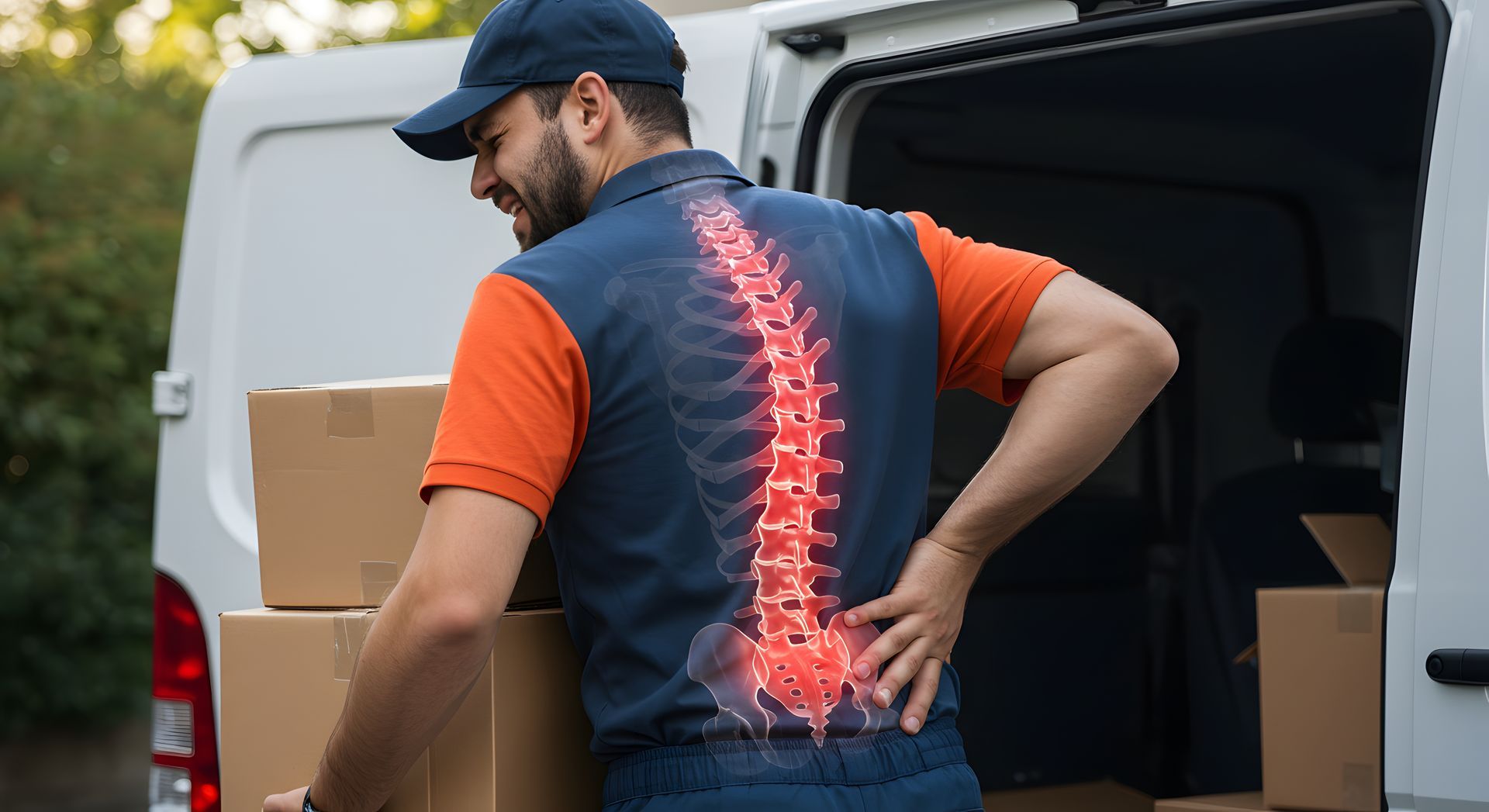How Chiropractic Care Can Help with Work-Related Injuries
How Chiropractic Care Can Help with Work-Related Injuries
What happens at work doesn't always stay at work. When you're struggling with lingering pain and stiffness from a trip-and-fall, back injury, or a strained neck, your injury may begin to take over your life. Chiropractic care offers the perfect way to regain control. Chiropractors provide treatments that promote healing, improve range of motion, decrease pain, and reduce inflammation, swelling, and stiffness.
Is Chiropractic Care Right for You?
Whether your injury was recent or you've been struggling with pain and stiffness for weeks, chiropractic care offers the ideal solution to work-related injuries. Chiropractic care focuses on the musculoskeletal (muscles and bones) and nervous systems. As many workplace injuries affect these parts of the body, chiropractic care offers an effective natural solution.
Treatments target the source of your pain rather than concentrating solely on your symptoms. If you ignore the source of your pain, your symptoms might flare up again in the future, or you may face long-term complications.
If you're tired of being in pain and are eager to get back to work, chiropractic care offers many benefits, including:
- Safer Pain Relief. Strong prescription pain medications effectively control pain, but may lead to addiction. Chiropractic treatments activate your body's natural pain relief system to control pain without drugs. During treatments, production of serotonin and endorphins, hormones that ease pain, increases. Chiropractic care can reduce opioid use after a spinal injury, according to a research study published in Pain Medicine in 2020. Researchers noted that patients who saw a primary care doctor and a chiropractor were half as likely to fill prescriptions for opioids compared to patients who only received primary care.
- Less Pain. Pain can occur if a subluxation or a tight muscle presses on a nerve as it exits your spinal column. Subluxations happen when the vertebrae in your spine become misaligned. Adjusting the vertebrae with spinal manipulation therapy eases pressure on the nerve, ending pain. Your chiropractor may also use massage to relax tight muscles and tissues.
- Quicker Healing. Injuries that affect the alignment of your spine or cause stiff muscles may take longer to heal. Chiropractic treatments correct these issues, improving healing. Adjustments, massage therapy, ultrasound, and other therapies increase blood flow, making it easier for healing nutrients in your blood to reach the injured area.
- An Effective Treatment Option for Lifting Injuries. Overexertion injuries, including those that involve lifting, pushing, and carrying, were the second most common cause of workplace injuries that resulted in missed days of work, according to the National Safety Council. Chiropractors use a variety of treatments, including adjustments, massage, trigger point therapy, flexion distraction, and electrical stimulation to treat sprains, strains, subluxations, sciatica, herniated discs, and other issues caused by lifting injuries.
- More Flexibility. Have you noticed that your back and neck are stiff, or it's harder to move your arm or leg after your injury? Inflammation, subluxations, muscle tension, muscle spasms, trigger points, and scar tissue can cause stiffness and poor range of motion. Chiropractic treatments improve flexibility and range of motion and decrease stiffness.
- Relief for Repetitive Stress Injuries. Repetitive stress injuries happen when you perform the same action repeatedly. The injuries can damage ligaments, tendons, muscles, and nerves. Common types of repetitive stress injuries include tendinitis, bursitis, golfer's elbow, tennis elbow, trigger finger, and carpal tunnel syndrome. Chiropractic treatments like massage, myofascial release, adjustments, and trigger point therapy improve movement, break down scar tissue, boost blood flow, and ease pain, swelling, stiffness, numbness, and tingling.
- Better Posture. Subluxations and tight tissues can occur when poor posture stresses your spine. These issues may lead to muscle imbalances that make it harder to prevent a fall when you slip on a freshly washed floor. Unfortunately, subluxations and tight muscles and tissues make it difficult to maintain proper posture. Correcting these issues with chiropractic treatments makes it much easier to avoid slouching. Your chiropractor can also offer posture suggestions and recommend helpful posture-friendly exercises.
Struggling with a work-related injury? Relieve your pain with chiropractic care. Contact our office to schedule an appointment.
Sources:
NCBI: Pain Medicine: Impact of Chiropractic Care on Use of Prescription Opioids in Patients with Spinal Pain, 12/25/2020
https://pubmed.ncbi.nlm.nih.gov/32142140/
National Safety Council: Top Work-Related Injury Causes
https://injuryfacts.nsc.org/work/work-overview/top-work-related-injury-causes/
American Chiropractic Association: Back Pain: Prevention and Conservative Treatment, 8/22/2022
https://handsdownbetter.org/back-pain-prevention-and-conservative-treatment/
WebMD: What to Know About Overexertion, 2/27/2024
https://www.webmd.com/fitness-exercise/what-to-know-about-overexertion










